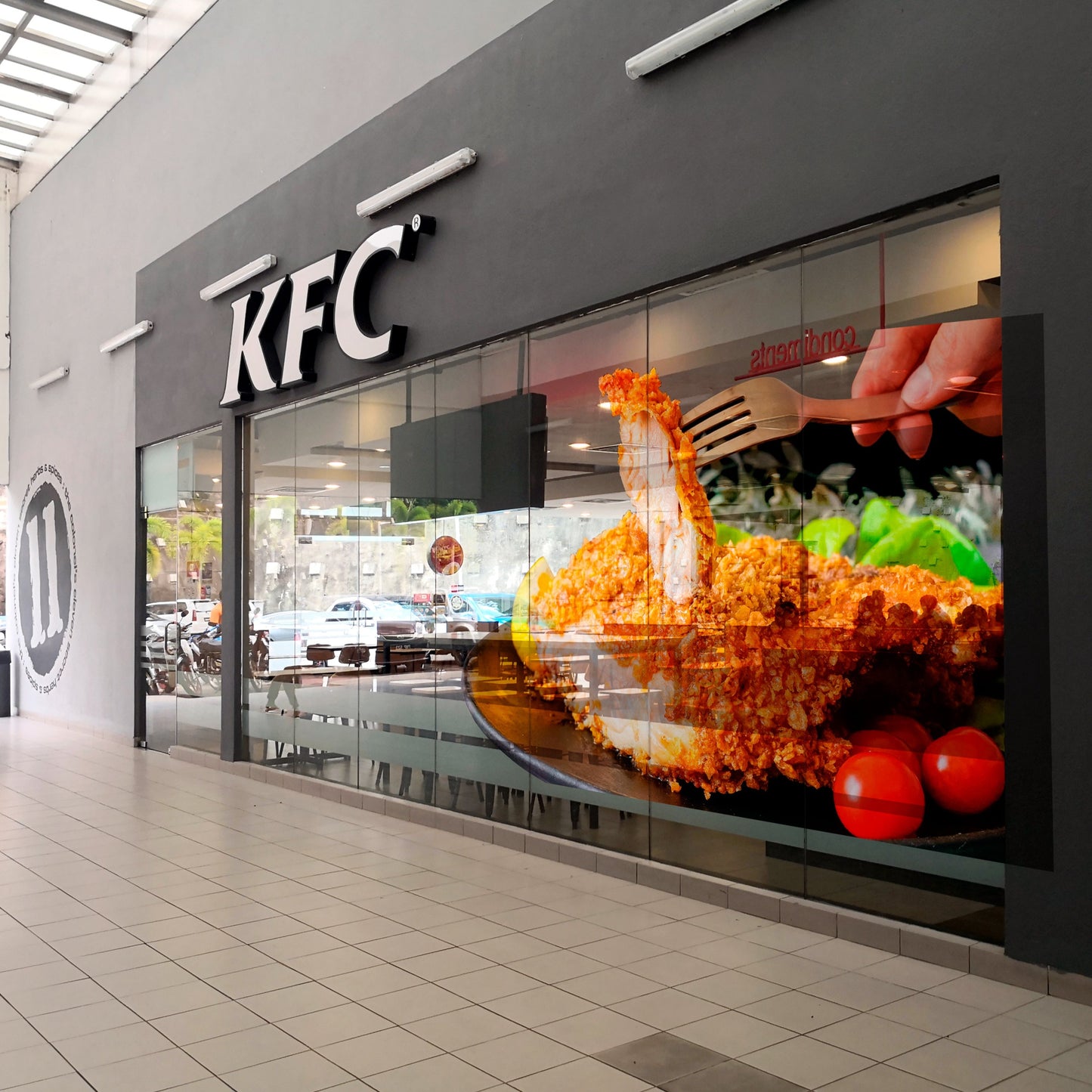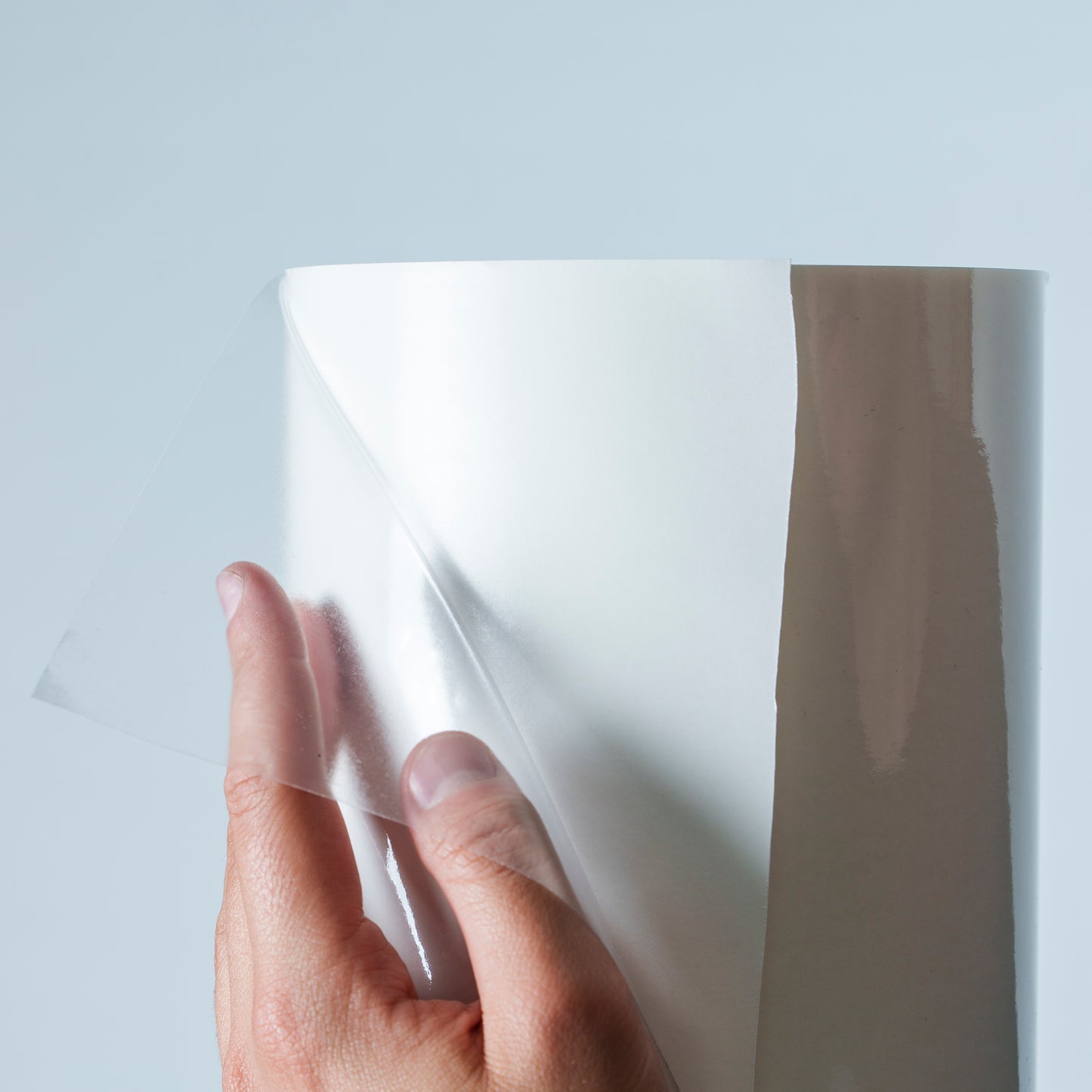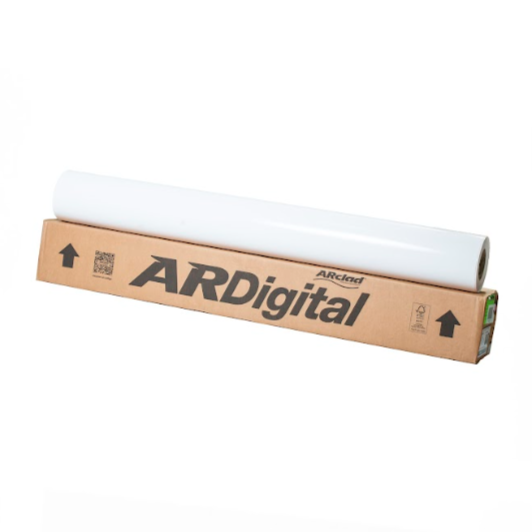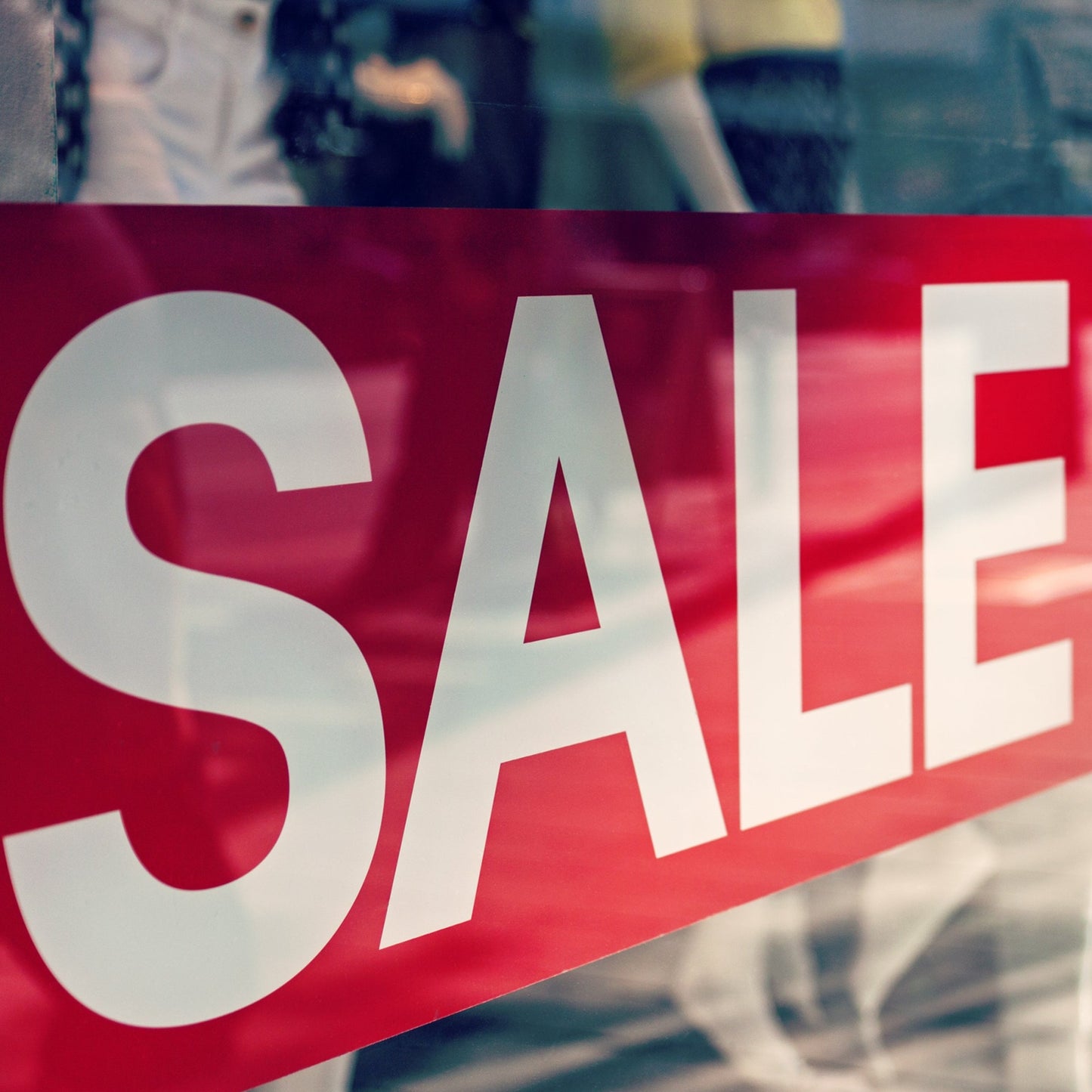Product Description
Presentation of the product:
Name: Ardigital Printing/Lamination Film-Permanent Adhesive (P1)
Ardigital Lamination Film P1 is a reliable and durable choice for all your laminating needs. This high-quality film offers superior protection and a professional finish for your documents. Trust in Ardigital for a top-grade laminating experience.
Roll Quantity: 54 yds
Online sale:
Width: 41 inch, 48 inch, 55 inch and 60 inch.
Lenght: 5 yds,10 yds, 20 yds and 54 yds (full roll).
Warranty: 3 years
Description: Ardigital Lamination Film is a transparent vinyl with a matte and glossy finish, with very good cohesion due to its P1 adhesive. Its acrylic base is a structure composed of a semi-rigid PVC film with an excellent matte or glossy finish.
Ideal for advertising applications such as large format printing, notices, labels and self-adhesive advertising pieces produced by plotter cutting systems and various printing methods such as. as.
- Solvent inks
- Eco-solvent inks
- Latex
- UV curing
- Screen printing
It has high transparency, very good cohesion, good chemical and physical stability, good behavior during cutting and die-cutting, and good adhesive strength.
Applications
Ideal for manufacturing products made by plotter cutting systems and printed by screen printing and large format digital printing with solvent, eco-solvent, latex, screen printing and UV curing inks, providing good dimensional stability.
Characteristics
- Matte or Gloss white vinyl print side
- Permanent Adhesive 1 - P1
- Kraft paper backing - K135
- Service temperature range: 0°C to 90°C
- Application temperature range: 0°C to 40°C
- Die-cutability: Excellent
- Transparency: Excellent
- Useful life (Months): outdoors, vertical installation: 36
Adhesive Behavior
- Adhesion at Room Temperature: (23 ± 2) º C
- Galvanized sheet - Metal: Excellent
- Polystyrene sheet: Excellent
- Acrylic sheet: Excellent
- Stainless steel: Excellent
- Glass: Excellent
- Cardboard: N/Applicable
- MDF: N/Applicable
Endurance
- Aging: Excellent
- Ultraviolet: Excellent
- Water absorption: Regular
Limitations of use
The product is not designed or recommended for the following uses and applications:
• Walls or walls.
• Curved or wavy surfaces requiring superior formability and low shrinkage.
• Surfaces that do not have adequate cleaning, preparation and/or finishing.
• Surfaces with low surface energy or with the presence of release agents (PTFE, silicones, waxes, etc.)
• Paints that do not have adequate drying, anchoring and curing or irregular paints that have pores or bumps.
• Rusty surfaces.
• Non-rigid and flexible substrates that tend to lose their stability or original shape.
• Pasted over existing graphics that require remaining intact during vinyl removal.
• Contact with chemical compounds, fuels and/or exposure to environments with the presence of organic vapors, acid gases, etc.
•Vehicular use for complete banding campaigns.
•Cardboard.
Printing Process
It must be taken into consideration that the interaction of inks with self-adhesive vinyl during the printing process affects its components, and this is why it is important to allow the respective curing process of the inks to act depending on the inks being used. . The recommendations are to wait at least a period of 24 hours after printing to carry out an additional lamination or installation process. Likewise, the conditions at the time of printing should be around 25°C with a relative humidity between 40 and 60%.
Pre-Installation Tests
It is advisable before carrying out an installation, to carry out a test with a letter-size print, adhering it to the surface to be installed and checking the adhesion and removal behavior after 24 hours.
Tips
When installing, follow the following recommendations:
• Ideally, they should be smooth surfaces.
• As with most installation recommendations, it is important to clean the surface well of any degreasers or dust that may be present.
• The most recommended thing in these cases is NOT to use aqueous solutions for installation and always do it dry.
• It is recommended to clean with a cloth or wipe with alcohol to remove grease and dirt.
• Tools such as a spatula and heat gun must be used to help the installation process correctly.
• The use of base primer to promote adhesiveness and reinforce the installation with edge sealant is recommended depending on the surface to help anchor the adhesive.
• The installation conditions must be ideal and the surface to be installed must be between 4° and 40°C and relative humidity between 40 and 60%.
• Hydrocarbon-free compounds must be used to clean the graph.
Vinyl Removal
Aspects to take into account for efficient vinyl removal:
• Removal often requires the use of heat and/or chemicals (interaction with the surface or its impact must be evaluated).
• Carry out the removal slowly and maintaining an angle of approximately 90° between the surface and the vinyl.
• Adhesive residue may remain on the surface, depending on the type of surface and compatibility with the adhesive, as well as the method used for removal.
Before starting production, it is recommended to carry out tests on the substrates mentioned above due to the different compositions they may have.
ARDIGITAL
Ardigital Printing/Lamination Film-Permanent Adhesive (P1)
Ardigital Printing/Lamination Film-Permanent Adhesive (P1)
SKU:
Couldn't load pickup availability
Product Description
Presentation of the product:
Name: Ardigital Printing/Lamination Film-Permanent Adhesive (P1)
Ardigital Lamination Film P1 is a reliable and durable choice for all your laminating needs. This high-quality film offers superior protection and a professional finish for your documents. Trust in Ardigital for a top-grade laminating experience.
Roll Quantity: 54 yds
Online sale:
Width: 41 inch, 48 inch, 55 inch and 60 inch.
Lenght: 5 yds,10 yds, 20 yds and 54 yds (full roll).
Warranty: 3 years
Description: Ardigital Lamination Film is a transparent vinyl with a matte and glossy finish, with very good cohesion due to its P1 adhesive. Its acrylic base is a structure composed of a semi-rigid PVC film with an excellent matte or glossy finish.
Ideal for advertising applications such as large format printing, notices, labels and self-adhesive advertising pieces produced by plotter cutting systems and various printing methods such as. as.
- Solvent inks
- Eco-solvent inks
- Latex
- UV curing
- Screen printing
It has high transparency, very good cohesion, good chemical and physical stability, good behavior during cutting and die-cutting, and good adhesive strength.
Applications
Ideal for manufacturing products made by plotter cutting systems and printed by screen printing and large format digital printing with solvent, eco-solvent, latex, screen printing and UV curing inks, providing good dimensional stability.
Characteristics
- Matte or Gloss white vinyl print side
- Permanent Adhesive 1 - P1
- Kraft paper backing - K135
- Service temperature range: 0°C to 90°C
- Application temperature range: 0°C to 40°C
- Die-cutability: Excellent
- Transparency: Excellent
- Useful life (Months): outdoors, vertical installation: 36
Adhesive Behavior
- Adhesion at Room Temperature: (23 ± 2) º C
- Galvanized sheet - Metal: Excellent
- Polystyrene sheet: Excellent
- Acrylic sheet: Excellent
- Stainless steel: Excellent
- Glass: Excellent
- Cardboard: N/Applicable
- MDF: N/Applicable
Endurance
- Aging: Excellent
- Ultraviolet: Excellent
- Water absorption: Regular
Limitations of use
The product is not designed or recommended for the following uses and applications:
• Walls or walls.
• Curved or wavy surfaces requiring superior formability and low shrinkage.
• Surfaces that do not have adequate cleaning, preparation and/or finishing.
• Surfaces with low surface energy or with the presence of release agents (PTFE, silicones, waxes, etc.)
• Paints that do not have adequate drying, anchoring and curing or irregular paints that have pores or bumps.
• Rusty surfaces.
• Non-rigid and flexible substrates that tend to lose their stability or original shape.
• Pasted over existing graphics that require remaining intact during vinyl removal.
• Contact with chemical compounds, fuels and/or exposure to environments with the presence of organic vapors, acid gases, etc.
•Vehicular use for complete banding campaigns.
•Cardboard.
Printing Process
It must be taken into consideration that the interaction of inks with self-adhesive vinyl during the printing process affects its components, and this is why it is important to allow the respective curing process of the inks to act depending on the inks being used. . The recommendations are to wait at least a period of 24 hours after printing to carry out an additional lamination or installation process. Likewise, the conditions at the time of printing should be around 25°C with a relative humidity between 40 and 60%.
Pre-Installation Tests
It is advisable before carrying out an installation, to carry out a test with a letter-size print, adhering it to the surface to be installed and checking the adhesion and removal behavior after 24 hours.
Tips
When installing, follow the following recommendations:
• Ideally, they should be smooth surfaces.
• As with most installation recommendations, it is important to clean the surface well of any degreasers or dust that may be present.
• The most recommended thing in these cases is NOT to use aqueous solutions for installation and always do it dry.
• It is recommended to clean with a cloth or wipe with alcohol to remove grease and dirt.
• Tools such as a spatula and heat gun must be used to help the installation process correctly.
• The use of base primer to promote adhesiveness and reinforce the installation with edge sealant is recommended depending on the surface to help anchor the adhesive.
• The installation conditions must be ideal and the surface to be installed must be between 4° and 40°C and relative humidity between 40 and 60%.
• Hydrocarbon-free compounds must be used to clean the graph.
Vinyl Removal
Aspects to take into account for efficient vinyl removal:
• Removal often requires the use of heat and/or chemicals (interaction with the surface or its impact must be evaluated).
• Carry out the removal slowly and maintaining an angle of approximately 90° between the surface and the vinyl.
• Adhesive residue may remain on the surface, depending on the type of surface and compatibility with the adhesive, as well as the method used for removal.
Before starting production, it is recommended to carry out tests on the substrates mentioned above due to the different compositions they may have.





Excellent product!! Recomended






